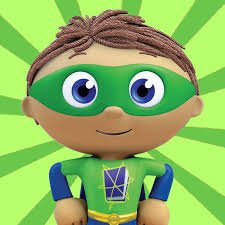The Genetic Designers
In a world where parents could design their children’s traits, perfection had become normal. Babies were no longer born with surprises. Parents chose their child’s eye color, height, talents, and even personality. Everyone looked flawless — but they all seemed the same.
Kitty, however, was different.
At sixteen, Kitty had curly brown hair that refused to stay neat, freckles that danced across her cheeks, and a laugh that came too loud in quiet rooms. She knew she wasn’t what her parents had ordered. They had chosen a daughter with straight black hair, perfect skin, and a calm, quiet nature.
“I just want you to behave,” her mother would sigh.
“I am behaving,” Kitty would reply.
“No,” her father added one evening, “you’re... unbalanced. We'll fix that.”
Kitty’s heart pounded. She knew what “fix” meant. The government’s Correction Clinic had ways of changing children who didn’t turn out as planned. They could erase stubbornness, remove loud laughs, and dull sharp tempers.
That night, Kitty sat by her window, staring out at the city lights. She couldn’t let them change her.
“I won’t lose myself,” she whispered.
Before dawn, Kitty packed a small bag with clothes, her notebook, and an old photo of her grandmother — the only person who ever said Kitty’s freckles were beautiful. She slipped out the back door and ran through the empty streets.
Hours later, Kitty found herself in a hidden part of the city — a place where the lights flickered, and walls were covered in graffiti. She had heard rumors of a group called The Originals — people who refused to be changed. If anyone could help her, it was them.
“Who are you?” a voice called.
Kitty turned to see a boy her age stepping out of the shadows. He had wild red hair and a mischievous grin.
“I’m... Kitty,” she said nervously.
“Kitty?” He chuckled. “That’s an old name. People usually pick fancy ones now — Nova, Orion, Skyler... stuff like that.”
“My parents picked the name,” she said quietly.
“Good,” the boy said. “That means they did one thing right. I’m Dex.”
Dex led Kitty to an old theater. Inside, kids like her gathered — some with mismatched eyes, others with bright hair or crooked smiles. None of them looked like the flawless models in magazines.
“You’re one of us now,” Dex said.
“But... what happens when the Correction Clinic finds us?” Kitty asked.
“They’ll try,” Dex replied, “but they can’t fix what’s already perfect.”
Kitty smiled for the first time in days.
For weeks, Kitty trained with the Originals. They taught her how to blend in, how to move through the city unnoticed, and how to protect herself if the Clinic’s agents found her.
“You’re faster than most,” Dex told her one afternoon. “Your parents picked that for you?”
Kitty shook her head. “No. I guess that’s just... me.”
“I like the real you,” Dex said.
“I like the real me too,” Kitty replied.
One chilly evening, Dex found Kitty sitting alone on the theater steps.
“Thinking about your parents?” he asked.
Kitty nodded. “I wonder if they miss me... or if they’re just embarrassed I’m not what they wanted.”
Dex sat beside her. “My parents tried to design me to be quiet,” he said. “Instead, I ended up... like this.” He grinned.
“I think you turned out perfect,” Kitty said with a smile. ---
One night, while Kitty and Dex patrolled the streets, she spotted two men in dark suits talking to a shopkeeper.
“It’s the Clinic,” Kitty whispered.
“We need to warn the others,” Dex said.
Before they could leave, one of the men spotted them.
“There!” the man shouted. “That’s the runaway!”
“Run!” Dex yelled.
They sprinted down the narrow streets, dodging crates and broken glass. But the agents were faster than Kitty had expected.
“I can’t keep up!” she gasped.
“Yes, you can!” Dex grabbed her hand. “Trust yourself!”
Kitty’s feet seemed to move on their own. She dodged corners, jumped over fences, and zigzagged through alleys. When they finally stopped, Dex grinned.
“I told you,” he said. “You’re faster than you think.”
When they returned to the theater, Kitty found the other Originals packing their things.
“They’re tracking us,” one of the older girls explained. “We have to leave.”
“But where will we go?” Kitty asked.
Dex’s smile faded. “There’s one place,” he said. “The Archive.”
“The Archive?” Kitty repeated. “That’s a myth.”
“It’s real,” Dex insisted. “It’s where they keep the original DNA records — the files that show who we’re meant to be.”
“If we destroy those records,” Kitty said, “they can’t change us back.”
“Exactly,” Dex said.
The next night, Kitty, Dex, and a few others snuck into the Archive building. The walls hummed with security drones, and cameras watched from every corner.
“This way,” Dex whispered, leading them to a dimly lit room.
Rows of glowing glass tubes stretched across the walls — each one containing a small, swirling light. Kitty stepped closer.
“What are these?” she asked.
“Our true selves,” Dex whispered. “The DNA they tried to erase.”
Suddenly, footsteps echoed from the hallway.
“Go!” Dex shouted.
Kitty grabbed a glowing tube marked with her name. As the others fled, she ran to the far wall and found a small control panel.
“I can reset it!” she called out.
“Are you sure?” Dex asked.
“I have to try!”
Kitty pressed a series of buttons, and the glowing tubes began to flicker. Sparks shot out, and suddenly, the lights went dark.
“Let’s go!” Dex grabbed her arm, and they raced outside.
The next morning, Kitty woke up to a city filled with confusion. People wandered the streets, touching their hair, their faces — their real faces.
“It worked,” Dex said beside her. “No more perfect models... just people.”
Kitty looked at her reflection in a shop window. Her curls were messier than ever, her freckles brighter, and her smile wider than she remembered.
“I like this,” she whispered.
“I do too,” Dex said.
For the first time, Kitty felt truly whole — not designed, not fixed... just herself.
That day, the world remembered something important — being perfect didn’t mean being better. It meant being the same. And for Kitty, being different had saved them all.
====================
The Lesson of the Story :
The lesson in this story is that being true to yourself is more important than trying to be perfect. People may pressure you to change or act a certain way, but real happiness comes from accepting who you are. Everyone has special traits that make them unique, and those differences should be valued, not erased. Trying to fit into someone else's idea of "perfect" can take away what makes you special. True strength comes from believing in yourself, even when others doubt you. In the end, being real, honest, and proud of who you are is what makes you truly shine. Embracing your flaws and differences can inspire others to do the same.
























.jpg)

.jpg)


.jpg)




.jpeg)






.jpg)
.jpeg)





.jpeg)
.jpg)

.jpg)

.jpeg)







.jpg)
















.jpeg)







.png)








.jpg)